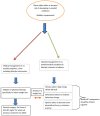Aging, Nutritional Status and Health
- PMID: 27417787
- PMCID: PMC4939559
- DOI: 10.3390/healthcare3030648
Aging, Nutritional Status and Health
Abstract
The older population is increasing worldwide and in many countries older people will outnumber younger people in the near future. This projected growth in the older population has the potential to place significant burdens on healthcare and support services. Meeting the diet and nutrition needs of older people is therefore crucial for the maintenance of health, functional independence and quality of life. While many older adults remain healthy and eat well those in poorer health may experience difficulties in meeting their nutritional needs. Malnutrition, encompassing both under and over nutrition increases health risks in the older population. More recently the increase in obesity, and in turn the incidence of chronic disease in older adults, now justifies weight management interventions in obese older adults. This growing population group is becoming increasingly diverse in their nutritional requirements. Micro-nutrient status may fluctuate and shortfalls in vitamin D, iron and a number of other nutrients are relatively common and can impact on well-being and quality of life. Aging presents a number of challenges for the maintenance of good nutritional health in older adults.
Keywords: nutritional screening and intervention; obesity; older adults; under nutrition.
Figures
References
-
- United Nations 2013 World Population Aging Report. [(accessed on 27 July 2015)]. Available online: http://www.un.org/en/development/desa/population/publications/pdf/ageing....
-
- Jones J., Duffy M., Coull Y., Wilkinson H. Older people living in the community—Nutritional needs, barriers and interventions: A literature review. [(accessed on 23 March 2015)]. Available online: http://www.scie-socialcareonline.org.uk/older-people-living-in-the-commu....
-
- Watson L., Leslie W., Hankey C. Under-nutrition in old age: Diagnosis and management. Rev. Clin. Gerontol. 2006;15:1–12. doi: 10.1017/S095925980600195X. - DOI
Publication types
LinkOut - more resources
Full Text Sources
Other Literature Sources



